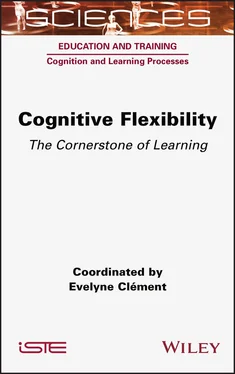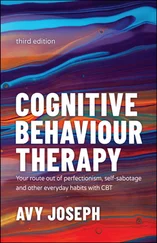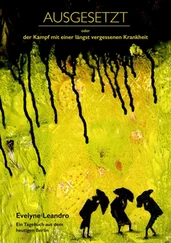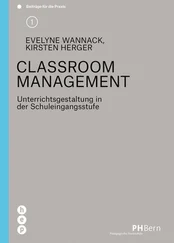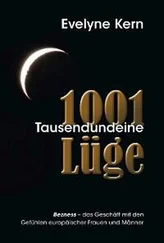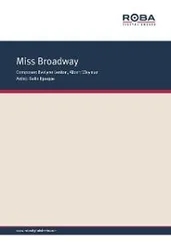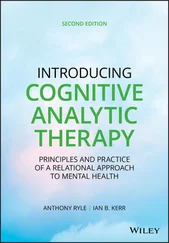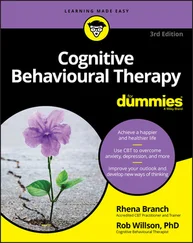Evelyne Clement - Cognitive Flexibility
Здесь есть возможность читать онлайн «Evelyne Clement - Cognitive Flexibility» — ознакомительный отрывок электронной книги совершенно бесплатно, а после прочтения отрывка купить полную версию. В некоторых случаях можно слушать аудио, скачать через торрент в формате fb2 и присутствует краткое содержание. Жанр: unrecognised, на английском языке. Описание произведения, (предисловие) а так же отзывы посетителей доступны на портале библиотеки ЛибКат.
- Название:Cognitive Flexibility
- Автор:
- Жанр:
- Год:неизвестен
- ISBN:нет данных
- Рейтинг книги:4 / 5. Голосов: 1
-
Избранное:Добавить в избранное
- Отзывы:
-
Ваша оценка:
- 80
- 1
- 2
- 3
- 4
- 5
Cognitive Flexibility: краткое содержание, описание и аннотация
Предлагаем к чтению аннотацию, описание, краткое содержание или предисловие (зависит от того, что написал сам автор книги «Cognitive Flexibility»). Если вы не нашли необходимую информацию о книге — напишите в комментариях, мы постараемся отыскать её.
Cognitive Flexibility — читать онлайн ознакомительный отрывок
Ниже представлен текст книги, разбитый по страницам. Система сохранения места последней прочитанной страницы, позволяет с удобством читать онлайн бесплатно книгу «Cognitive Flexibility», без необходимости каждый раз заново искать на чём Вы остановились. Поставьте закладку, и сможете в любой момент перейти на страницу, на которой закончили чтение.
Интервал:
Закладка:
Table 1.1summarizes the examples of direct measurement flexibility tests presented in this chapter. The target population (children or adults) is specified, as well as the ages, if necessary, and the presence of a norm is indicated in brackets when available. The last column shows the type of measurement proposed: first, if it is a question of reactive flexibility, that is, in response to an instruction or cue, or a change in the characteristics of the stimuli, or spontaneous flexibility, the situation proposed induces a certain amount of flexibility, but the changes are initiated by the individual themselves. Then, it details if the change is requested at each trial (item by item) or by series of items (by block), or if the procedure corresponds to task switching.
Table 1.1. Examples of flexibility tasks in direct measurement
| Authors | Population | Type of measurement | |
| Trail Making Test | Reitan and Wolfson (1993) | Adults | Reactive Item by item |
| Trail Making Test for preschoolers | Espy and Cwik (2004) | Preschoolers | Reactive Item by item |
| Color Trail Test | D’Elia et al . (1996) | Adults | Reactive Item by item |
| Children’s Color Trail Test | Williams et al . (1995) | Children aged 8 to 16 years old | Reactive Item by item |
| Plus minus | Jersild (1927) | Adults | Reactive Task switching |
| Wisconsin Card Sorting Test | Grant and Berg (1948) | Adults | Reactive Per block |
| Brixton Spatial Anticipation Test | Burgess and Shallice (1996) | Adults | Reactive Per block |
| Brixton Preschool | Lehto and Uusitalo (2006) | Preschoolers | Reactive Per block |
| Dimensional Change Card Sort | Doebel and Zelazo (2015) | Preschoolers | Reactive Per block |
| Local Global Task | Miyake et al . (2000) | Adults | Reactive Task switching |
| Number-letter task | Rogers and Monsell (1995) | Adults | Reactive Task switching |
| The color-shape task | Miyake and Friedman (2012) | Adults | Reactive Task switching |
| Verbal fluency | Delis et al . (2001) | 8–89 years old (norm) | Spontaneous |
| The Creature Counting | Manly et al . (2001) | Children aged 6 to 12 years old (norm) | Reactive Per block |
| Fluidity of drawings | Korkman et al . (2012) | Children aged 5 to 16 years and 11 months (norm) | Spontaneous |
| Categorization | Korkman et al . (2012) | Children aged 7 to 16 years and 11 months (norm) | Spontaneous |
| Innovation paradigm | Karmiloff-Smith (1990) | Children | Spontaneous |
| Drawing of a man starting with the foot | Baldy (2010) | Children | Spontaneous |
1.3.1.2. Indirect assessments
Several questionnaires allow for the indirect assessment of cognitive flexibility. One of the first to be proposed was the Cognitive Flexibility Scale (Martin and Ruben 1995). This scale consists of 12 items, to which the participant responds using a five-point Likert scale. Example of an item: “I am willing to work on problems that require a creative solution”.
The next three correspond to three versions of the Behavioral Assessment of Executive Functions Inventory, depending on the population. These three scales were constructed on an ecological basis and propose to evaluate the consequences of executive deficits in daily life, by adapting the situations to the three age groups targeted (preschoolers, children/adolescents, adults).
The BRIEF-A (Behavioral Assessment of Executive Function Inventory; Roth et al . (2005)), adult version, can be used to assess all executive functions, including flexibility. This questionnaire can be used in self or hetero-assessment.
It is composed of 75 questions grouped into nine scales: inhibition, flexibility, emotional control, self-control, initiation, working memory, planning/organization, task control and material organization. This tool was designed from an ecological perspective and allows the identification of executive deficits in adults (aged 18–93 years old) through their consequences in daily life.
Two other versions have been proposed, one for children and another for adolescents: the BRIEF (Behavioral Assessment of Executive Functions Inventory), child and adolescent version calibrated from 5 to 18 years of age (Gioia et al. 2000); the other for preschoolers: the BRIEF-P (Gioia et al . 2003). These two versions are proposed in hetero-assessment.
The BRIEF consists of 86 questions that can be grouped into eight scales: inhibition, flexibility, emotional control, initiation, material organization, working memory, planning/organization and control.
For each of the first two versions (BRIEF and BRIEF-A), two indices – a behavioral regulation index (BRI) and a metacognition index (MCI) – can be calculated, as well as a global executive composite score (ECS).
The BRIEF-P assesses behaviors in the school and/or family context of young preschoolers (aged 2–5 years and 11 months). It is composed of 63 questions (grouped into five scales: inhibition, flexibility, emotional control, working memory, planning/organization). In particular, three indices can be calculated:
1) the inhibitory control index (ICI), which combines inhibition and emotional control;
2) the flexibility index (FI), which combines flexibility and emotional control;
3) the emerging metacognition index (EMI), which combines working memory and planning/organization.
The Cognitive Flexibility Inventory (CFI) (Dennis and Vander Wal 2010) provides a quick measure of cognitive flexibility. It is composed of 20 items in all. It is offered in a self-report format. Three aspects of cognitive flexibility can be measured through the following three subscales:
1) the tendency to perceive difficult situations as controllable;
2) the ability to perceive multiple alternative explanations for life events and human behavior;
3) the ability to generate multiple alternative solutions to difficult situations.
On the basis of observation that cognitive flexibility may be particularly involved in emotion regulation, as a deficit in cognitive flexibility may be observed in mood and anxiety disorders; Gabrys et al. (2018) proposed the Cognitive Control and Flexibility Questionnaire (CCFQ).
This questionnaire was constructed to assess cognitive flexibility in the specific context of stressful situations. The CCFQ is a quick, self-report measure of cognitive flexibility with 18 items, all of which focus on stress management.
Table 1.2summarizes the examples of indirect measures of flexibility presented in this chapter.
Table 1.2. Examples of indirect measures of flexibility
| Authors | Population | Number of items | |
| Cognitive Flexibility Scale | Martin and Rubin (1995) | Adults | 12 |
| BRIEF-A: Behavioral Assessment of Executive Function Inventory | Roth et al. (2005) | Adults | 75 |
| BRIEF | Gioia et al. (2000) | Children and teenagers (aged 5 to 18 years old) | 86 |
| BRIEF-P | Gioia et al . (2003) | Preschoolers (aged 2–5 years old) | 63 |
| Cognitive Flexibility Inventory | Dennis and Vander Wal (2010) | Adults | 20 |
| Cognitive Control and Flexibility Questionnaire (CCFQ) | Gabrys et al. (2018) | Adults | 18 |
1.3.2. Which measure for which flexibility?
Интервал:
Закладка:
Похожие книги на «Cognitive Flexibility»
Представляем Вашему вниманию похожие книги на «Cognitive Flexibility» списком для выбора. Мы отобрали схожую по названию и смыслу литературу в надежде предоставить читателям больше вариантов отыскать новые, интересные, ещё непрочитанные произведения.
Обсуждение, отзывы о книге «Cognitive Flexibility» и просто собственные мнения читателей. Оставьте ваши комментарии, напишите, что Вы думаете о произведении, его смысле или главных героях. Укажите что конкретно понравилось, а что нет, и почему Вы так считаете.
